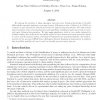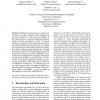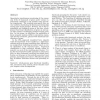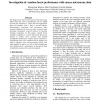BMCBI
2010
14 years 7 months ago
2010
Background: The development of DNA microarrays has facilitated the generation of hundreds of thousands of transcriptomic datasets. The use of a common reference microarray design ...
BIOINFORMATICS
2007
14 years 7 months ago
2007
We address the problem of using expression data and prior biological knowledge to identify differentially expressed pathways or groups of genes. Following an idea of Ideker et al...
BIOCOMP
2009
14 years 8 months ago
2009
Modern approaches to treating genetic disorders, cancers and even epidemics rely on a detailed understanding of the underlying gene signaling network. Previous work has used time s...
METMBS
2003
14 years 8 months ago
2003
Abstract Technological advancements are constantly increasing the size and complexity of data resulting from microarray experiments. This fact has led biologists to ask complex que...
PSB
2004
14 years 8 months ago
2004
Gene expression of a cell is controlled by sophisticated cellular processes. The capability of inferring the states of these cellular processes would provide insight into the mech...
BIOCOMP
2006
14 years 8 months ago
2006
APBC
2004
14 years 8 months ago
2004
Quantitative simultaneous monitoring of the expression levels of thousands of genes under various experimental conditions is now possible using microarray experiments. The resulti...
CATA
2008
14 years 8 months ago
2008
The diagnosis of cancer type based on microarray data offers hope that cancer classification can be highly accurate for clinicians to choose the most appropriate forms of treatmen...
ECML
2006
Springer
14 years 11 months ago
2006
Springer
We perform a systematic evaluation of feature selection (FS) methods for support vector machines (SVMs) using simulated high-dimensional data (up to 5000 dimensions). Several findi...
105
click to vote
AUSAI
2007
Springer
14 years 11 months ago
2007
Springer
Building classification models plays an important role in DNA mircroarray data analyses. An essential feature of DNA microarray data sets is that the number of input variables (gen...




